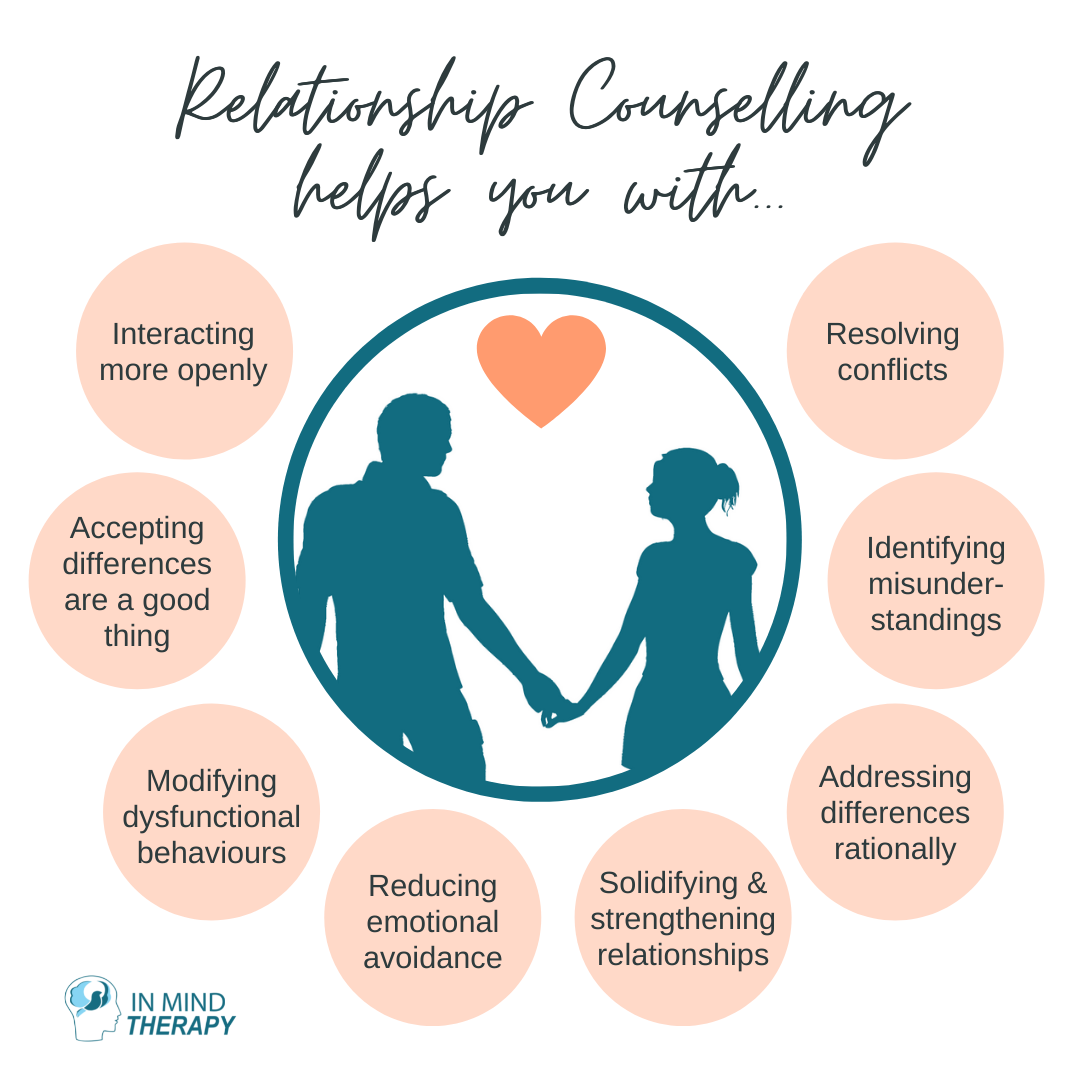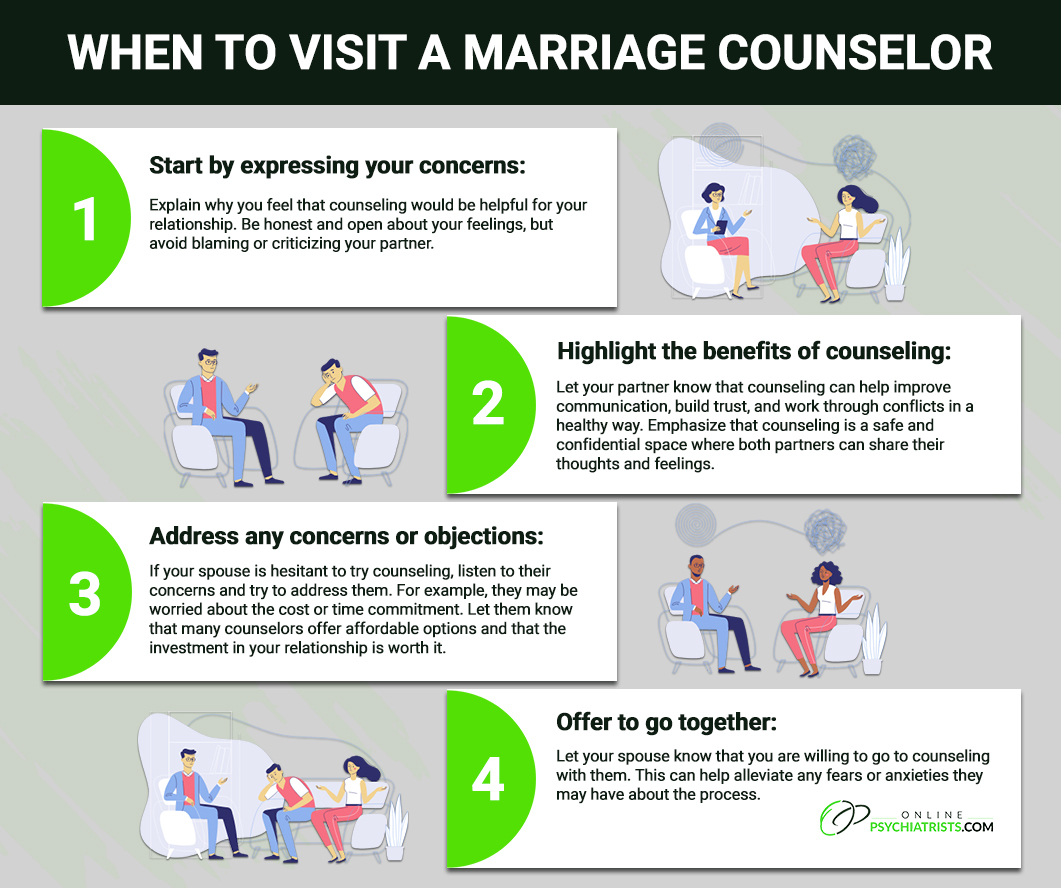Some Of Aim Point Counseling
Table of ContentsThe Buzz on Aim Point CounselingExamine This Report about Aim Point CounselingThe Facts About Aim Point Counseling UncoveredFacts About Aim Point Counseling UncoveredAim Point Counseling Fundamentals ExplainedAbout Aim Point Counseling
The longitudinal design includes a pre-treatment survey and 2 follow-up surveys at 3- and 12-months post-intervention. The study is set in eight Relationships Australia Victoria centres, throughout cosmopolitan, outer suburbs, and regional/rural sites. Relationships Australia, a non-government organisation, is the biggest supplier of pair counselling and relationship solutions in Australia.

These high rates of connection break down have been regularly associated with unfavorable health consequences for both grownups and kids complying with divorce/separation.
Not known Incorrect Statements About Aim Point Counseling
The impacts of separation and separation can be destructive, research suggests that high relationship discord in intact pairs is also most likely to have negative outcomes.
Factors that affect the outcomes of these services need detailed investigation. Research study to date has actually identified both couple and specific factors that may add to connection dissonance. These consist of connection satisfaction and commitment at the pair degree, and clinical depression at the private level. Robust research to review relationship-enhancing treatments in the community are limited.
8 Simple Techniques For Aim Point Counseling
Partnership complete satisfaction has been the most usual end result variable determined in more than 200 assessments of pair therapy [11,12] Research studies have found significant renovations in partnership contentment from pre- to post-treatment [13,14] and over the training course of one to two years adhering to therapy [15] In these researches, connection satisfaction was most regularly examined utilizing the Dyadic Change Scale (DAS) [16] Therefore, while most researches indicate improvements in partnership fulfillment following pair therapy, they are restricted by the samples and steps made use of, mainly short-term follow-up amount of time, and analyses that do not make up the dyadic nature of couple data. Connection commitment, based on procedures such as the Commitment Inventory (CI) [19], is one more typically examined connection end result.
To summarise, research indicates that couple-specific variables along with individual variables might predict the end results of pair coaching and connection services. The causal direction of these relationships, nevertheless, is much less clear. These monitorings are important, since, to justify and guide the application of connection services such as pair therapy, empirical evidence needs to check out both the results of connection solutions and the variables that forecast successful treatment.
There is an expanding consensus that efficiency researches should be complemented by performance research to best educate scientific practice [ 29] The minimal efficiency research that exists to day suggests that pair counselling can boost outcomes such as relationship contentment [33,43], interaction skills and basic well-being [44], a minimum of in some European countries.

We currently understand little regarding the accounts of pairs who choose relationship education and learning compared to those who seek connection therapy, or the outcomes of these programs. Nonetheless, anecdotal evidence suggests that there may be substantial distress amongst at least some couples looking for partnership education. Partnership education programs differ from pair counselling as they are normally extremely structured, carried out in teams, and focus on a mix of 4 parts; awareness, comments, cognitive adjustment, and abilities training [45]
Aim Point Counseling for Dummies
Feedback involves individuals completing questionnaires concerning their partnership (e.g. procedures of interpersonal troubles), and getting information on what their ratings indicate. Cognitive-behavioural approaches advertise changing cognitions to promote positive connections. These might consist of promoting reasonable attributions/expectations around unfavorable partner behavior [46] Lastly, in abilities training, pairs attend talks or presentations on partnership abilities, and practise these throughout facilitator-led tasks [ 45]
These results have persisted for as much as 4 years in some research studies click here to find out more [47] Nonetheless, these meta-analyses highlight restrictions in the current literature on partnership education and learning. Especially, the majority of research studies involved couples from top socio-economic backgrounds who were not experiencing high connection discord [47,48] This sample account might not stand for clients who commonly provide for connection education.
Fascination About Aim Point Counseling

Very little research has examined the relative benefits of couple coaching and relationship education and learning programs. As customers are most likely to self-select into these service kinds, it is unclear whether characteristic partnership distress profiles existing to each solution type, or without a doubt whether there is a communication between presenting profile, service kind and result.
Thus, we have consisted of a 12-month follow-up to determine longer-term fads and impacts. The research study uses a variety of standard outcome measures since some previous investigations have actually been criticised for their absence of standardised evaluation [50] Finally, the use of statistical evaluations that think freedom of information, such as t-tests, or ANOVAs, has prevailed in previous researches [ 44,49]
Consequently, we suggest to utilise multi-level statistical modelling procedures that control for the inter-dependence of pair information to evaluate any kind of therapy effects. The particular purposes of the ECC research study are to: 1. Map accounts of customers seeking neighborhood agency-based pair therapy vs. partnership enhancement programs in terms of socio-demographic and connection indicators (such as partnership contentment, connection commitment, interpersonal troubles, and reasons for going to), along with health (such as depression, general well-being) and health and wellness service usage (eg.
2. Figure out whether couple counselling and relationship education services enhance 3- and twelve-month end results for relationship fulfillment, commitment, and clinical depression, making use of analytical evaluations proper to pair data. 3. Identify the family member payments of customer factors (individual and couple) and therapy/education aspects to end results at 3- and 12-months, and to sustainability of outcomes over time.
What Does Aim Point Counseling Do?
Multi-level modelling to establish pre-post distinctions, regulating for dyadic (pair) level. To add to the literature assessing the effectiveness of community-based pair counselling. The outcomes will assist professional decision-making in community-based relationship service setups, and expert training. 3. To establish the family member payments of client/couple and therapy factors to outcomes at 3- and 12-months, and to sustainability of results over time.
Comments on “The Facts About Aim Point Counseling Uncovered”